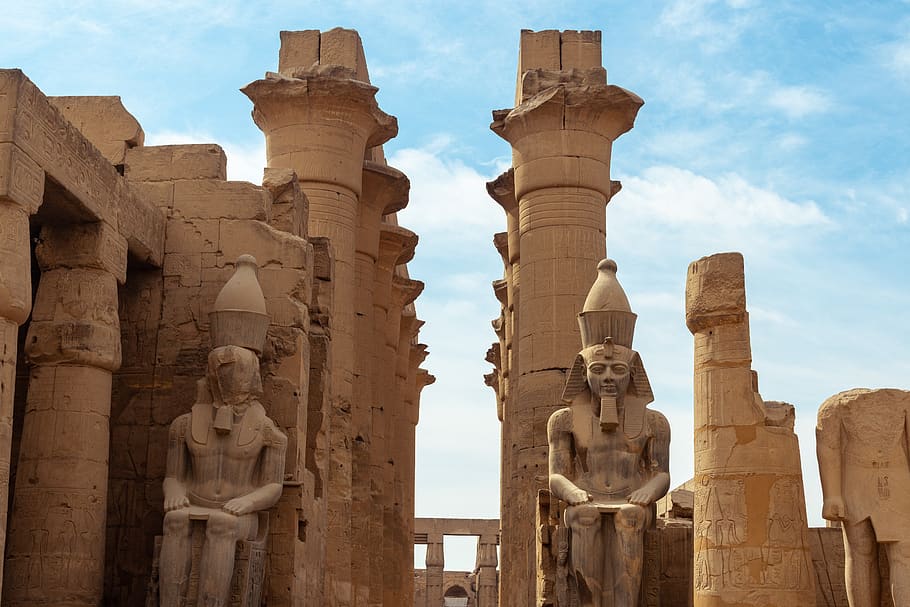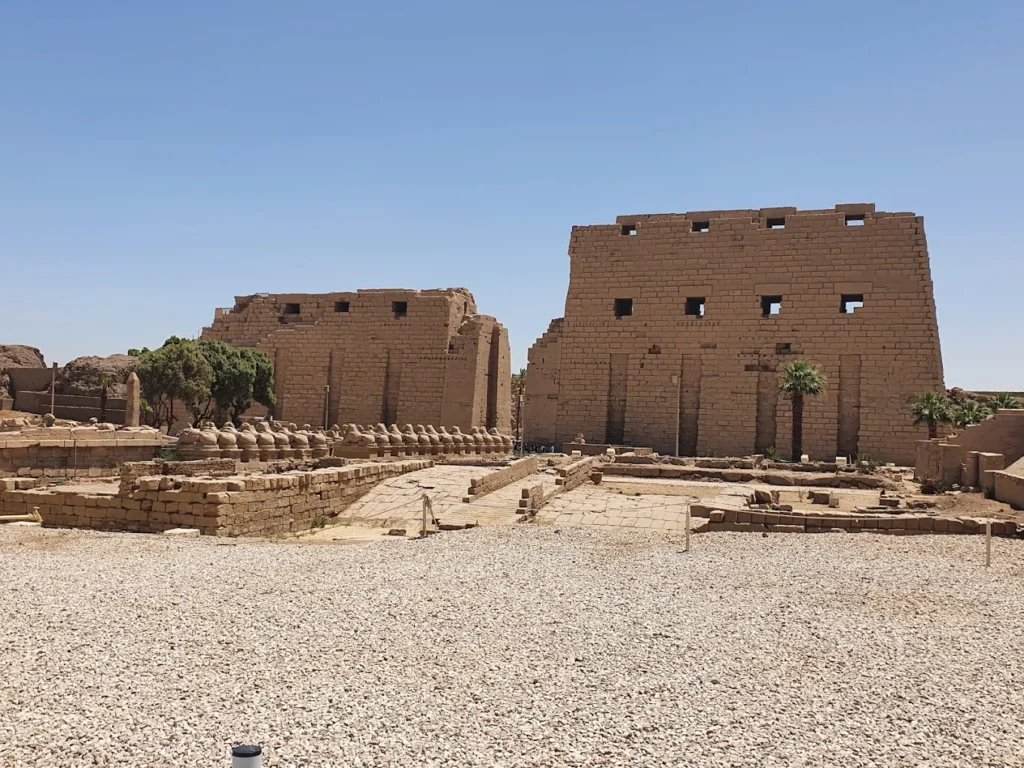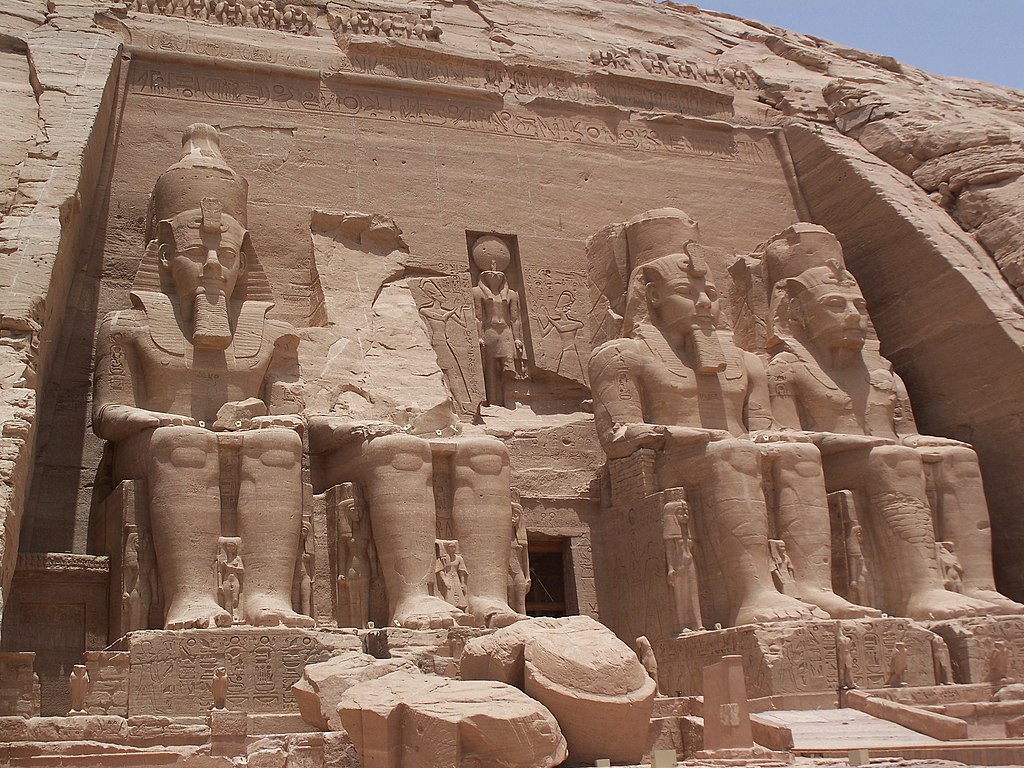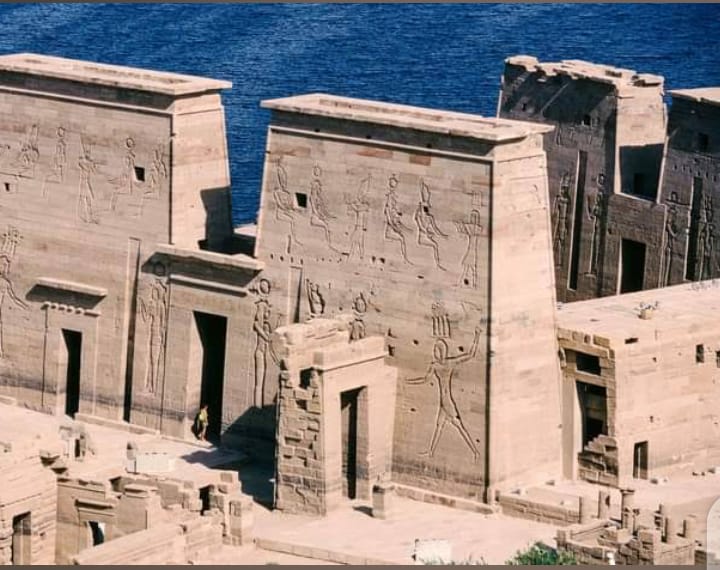The temples of ancient Egypt still rise from the desert like colossal puzzles frozen in stone. Karnak, Luxor, Philae, Abu Simbel — they are not just religious monuments, they are feats of engineering that continue to inspire wonder thousands of years later. But how were they built? Without cranes, trucks, or modern tools, how did the ancient Egyptians design, transport, and assemble such massive structures with perfect precision?
This article takes you inside the ancient construction process, from vision to reality.
From Concept to Sacred Blueprint
Temples weren’t random projects. Each one was a carefully planned symbol of divine order (Ma’at) and royal power. The king, advised by priests, would commission a temple to honor a specific god or goddess. Its alignment often matched cosmic or solar events — for example, Abu Simbel was designed so that the rising sun would illuminate statues in its inner sanctuary on two precise days each year.
Architects, known as “master builders,” created scaled drawings, planned foundations, and calculated proportions based on sacred geometry.
Sourcing and Transporting Massive Stone Blocks
Most temples were built from limestone, sandstone, or granite — materials chosen for strength and symbolic color. Quarrying these stones was an art in itself. Workers used copper or later bronze chisels, dolerite pounding stones, and wooden wedges soaked with water to split stone along natural fractures.
Transport was an even greater challenge. Huge blocks were moved on sledges dragged by teams of workers across roads lubricated with water or oil to reduce friction — a technique confirmed by archaeological evidence and even ancient wall paintings. For granite from Aswan, the Nile itself became the highway, carrying these massive stones downstream to construction sites hundreds of kilometers away.
Raising Columns, Obelisks, and Roofs
Egyptian temples were forests of columns, each carved with divine imagery and hieroglyphs. To erect them, builders likely used mud-brick ramps, wooden scaffolding, and carefully balanced levers. Obelisks — single stone monuments weighing hundreds of tons — were among the greatest challenges. Scholars believe they were slowly tipped upright into prepared sockets using a combination of ramps, ropes, counterweights, and ingenious sequencing.
The roofs of temples were stone slabs, each weighing several tons. These were slid up ramps and positioned on top of columns with precise alignment — a process requiring both brute strength and mathematical accuracy.
Carving, Painting, and Inscriptions
Once the main structure stood, the temple turned into a canvas. Teams of artisans carved reliefs depicting gods, pharaohs, rituals, and offerings. Painters then added vibrant mineral-based colors — red, blue, green, gold — which once made the walls glow with life and symbolism. Priests performed purification rituals, consecrating the space for divine presence.
Ancient Innovation, Modern Inspiration
What makes these achievements even more astonishing is that they were done without modern engines, steel, or digital design tools — yet the precision rivals anything built today. The durability of Egyptian temples is a testament to a civilization that combined religious devotion with scientific innovation.
Today, visitors stand where kings, priests, and commoners once walked, still surrounded by the same walls, columns, and carvings that have stood for over 3,000 years.
Final Thoughts
The temples of ancient Egypt were not only houses for the gods — they were messages to eternity. They show us that with vision, skill, and unity, humanity can build wonders that outlast empires.
If you want to experience these engineering marvels for yourself — to stand beneath towering pylons, trace the carvings with your own hands, and feel the silence of sanctuaries where gods were once believed to dwell — Luxury Nile Tours offers private guided journeys through Luxor, Aswan, and beyond.
Let us help you walk in the footsteps of ancient engineers — and discover the magic they left behind.




